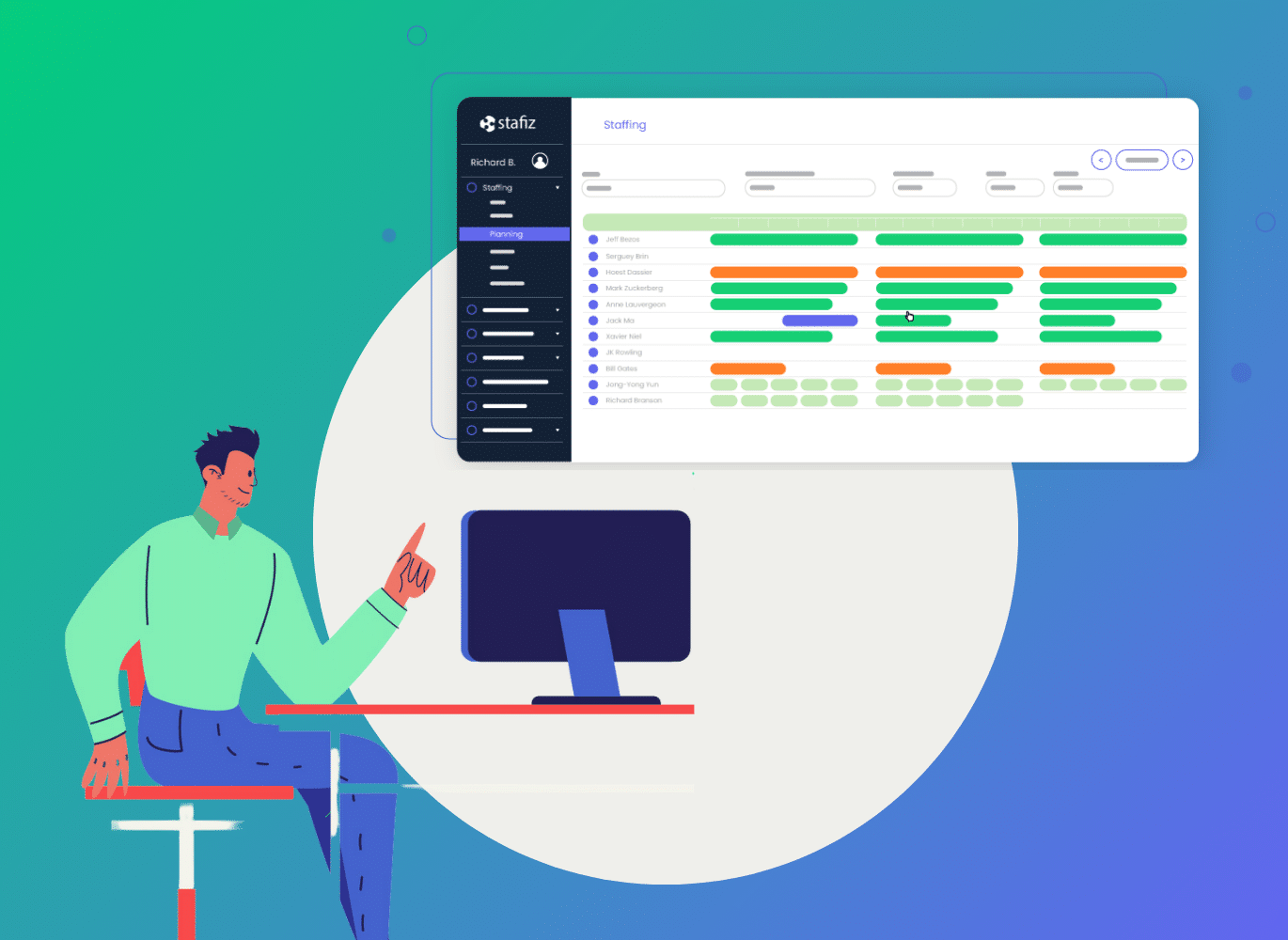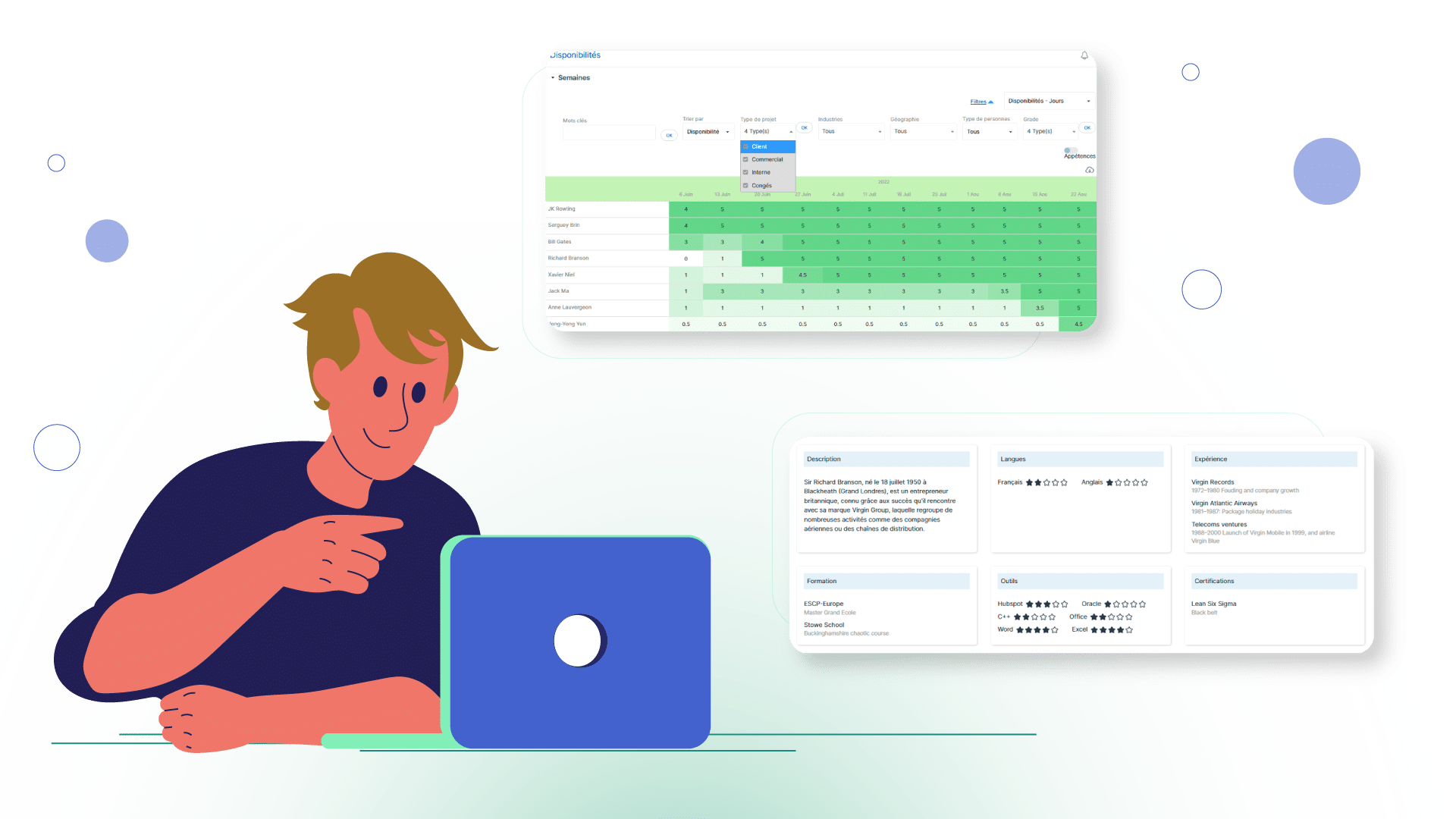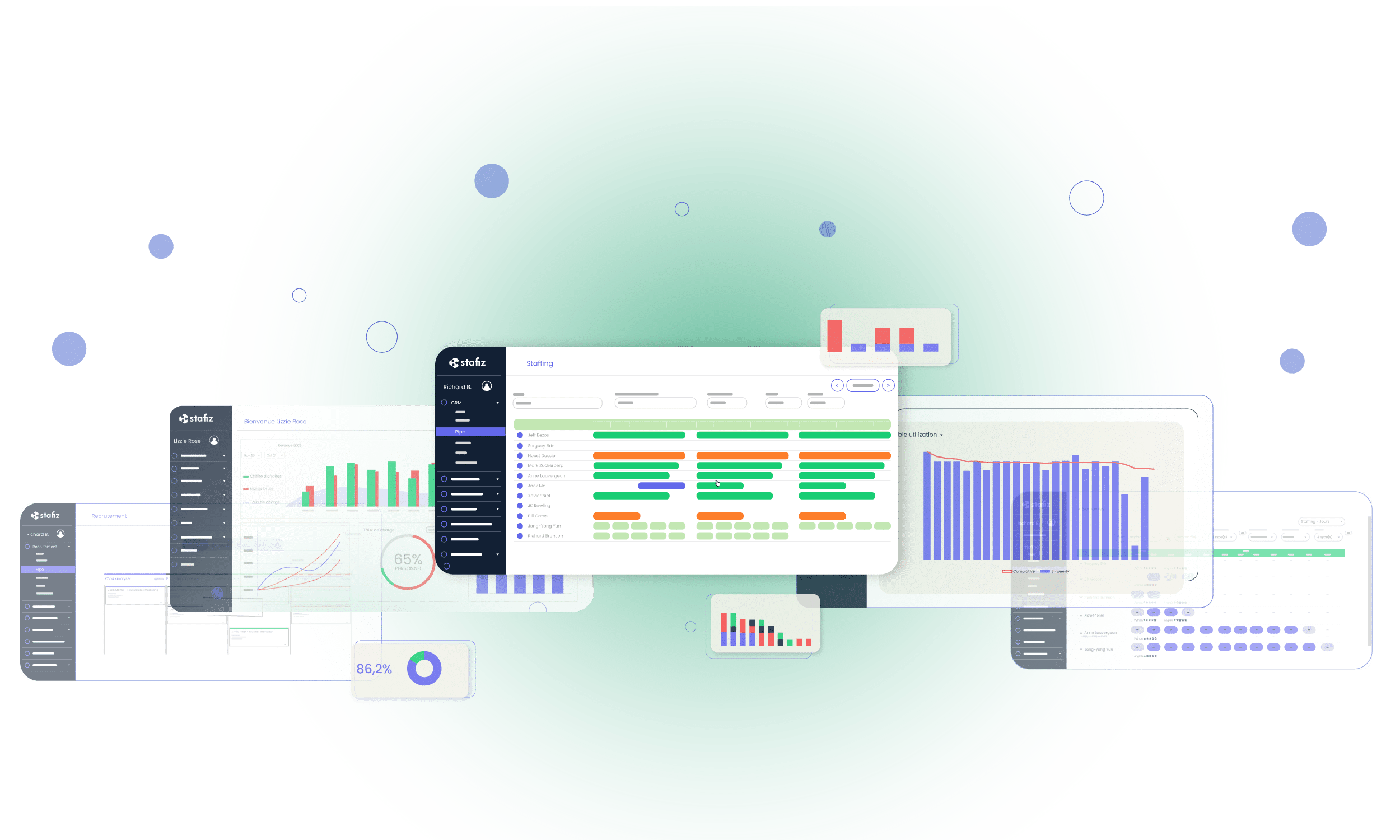9 common mistakes in the management of the resource planning

The resource planning team is a key process in a service company. It not only improves employee performance and retention, but also improves the performance of the company as a whole. The management of resource planning is regularly put aside whereas a simple work on this process allows to generate a fast and important ROI. Stafiz is a resource planning software that simplifies and automates resource planning and improves the performance of projects and employees. Based on our experience with hundreds of customers, we have compiled the 10 most common mistakes and explain how to avoid them.
1. Lack of a complete view of absences
One of the most common errors is the incomplete information that is used to manage the resource planning. IIt often happens that the management of absences is done in a dedicated software, a payroll software or an HRIS. Absence data, whether it be leave, stoppages or part-time work, remains blocked in this software. They do not go back into the staffing system in real time, even though this information is crucial to provide a real view of employees' work capacity.
c💡 How to avoid it : either your resource planning allows you to also manage leave, in which case the information can be easily sent to payroll, while ensuring a native connection with the management of the resource planning. Either an API connector exists between your leave management solution and your leave management solution. resource planning. In any case, it is imperative that you report the information about the absences in order to carry out the resource planning.
2. Missing out on external profiles
When you are looking for a profile to meet a customer need, the search is likely to be carried out in your candidate database and among your internal profiles. But it is likely that you have already worked with a large number of freelancers or external profiles belonging to your subcontractors. These are all skills profiles that could perfectly meet a customer need, and allow you to land the project by offering a better profile to your customer than your competitor. Not taking into account the profiles of external workers and subcontractors in searches is therefore a mistake that can be costly!
💡 How to avoid it : it is imperative to integrate your pool of subcontractors and freelancers into your profile databases. Your resource planning can give you the ability to save hundreds of external profiles. It can allow you to notify them when a need matches their profile. Stafiz, for example, gives external students the opportunity to indicate when they are available or unavailable. They thus multiply their chance of climbing to the top of the list in searches when they are relevant.
Stafiz supports you in the management of your resource planning and helps you to better manage the workload of your employees and subcontractors. Benefit from a more complete visibility on the different profiles, their experience, skills and availability in order to assign them to missions that suit them.
3. Not integrating employee preferences
The art of making a resource planning Efficient means doing the best casting to satisfy the client, but also making choices that allow the employee to grow and feel his or her career progress. To implement this approach, it is imperative to integrate employee preferences into the resource planning. By "preferences", we must understand the type of projects on which employees wish to work (for example "an energy project", a "financial due diligence", etc.) or, conversely, projects on which employees do not want to be staffed ("an assignment for an arms manufacturer" for example).
Knowing employee preferences is the best way to bring real progression in employees' careers and ensure their satisfaction and retention. Although it is not always possible to take them into account, not knowing the preferences of employees is still a major mistake.
💡 How to avoid it: Make sure that the resource planning that you choose allows employees to save their preferences and update them easily. Also make sure that the tool's algorithms take this data into account proportionally.
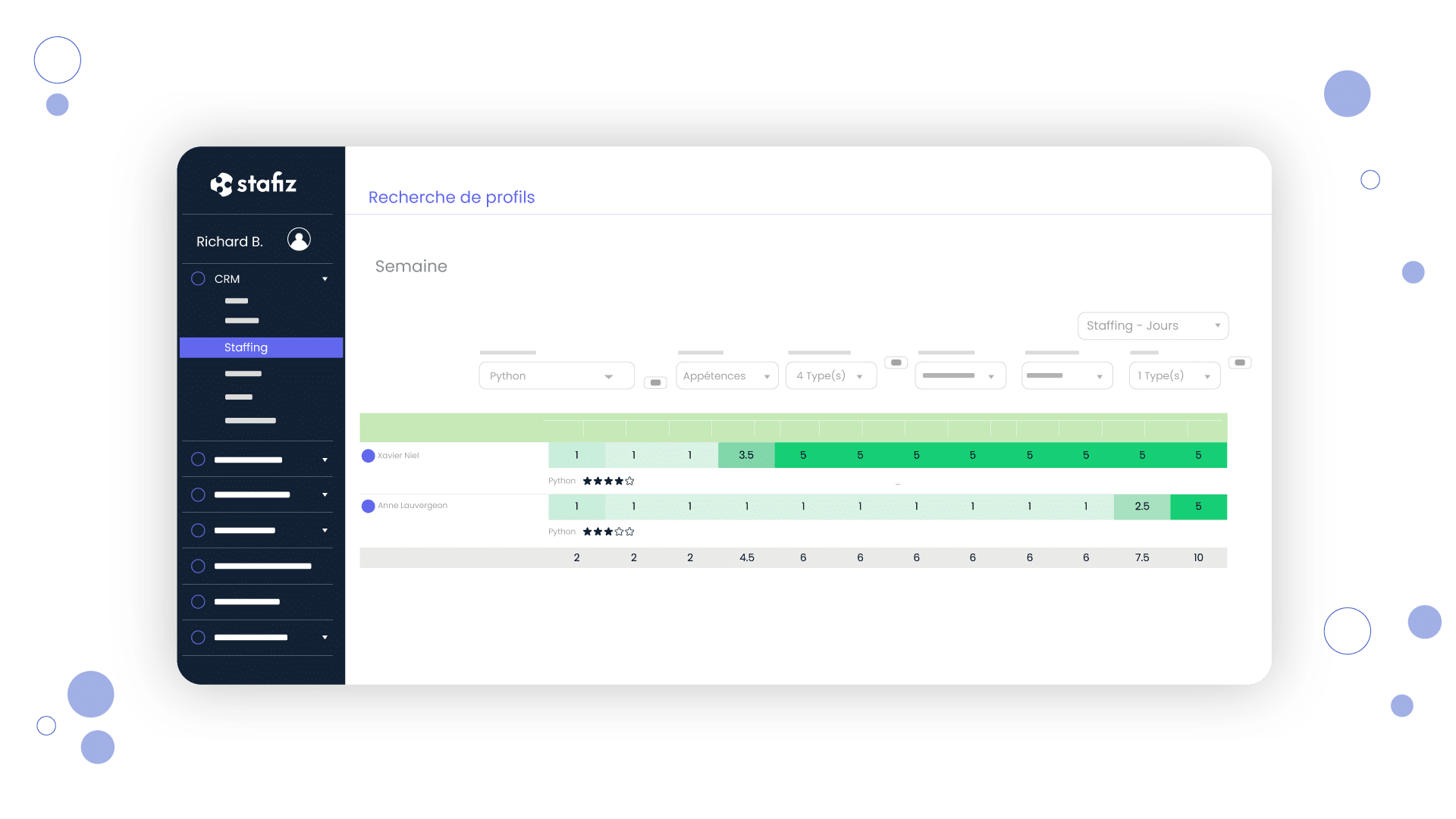
4. Do not try to optimize the TACE (staff activity rate)
A good management of resource planning rhymes with an improvement of the rate of activity excluded. If you are unfamiliar with this indicator, you should definitely take an interest in it. A service company must have excellent visibility on its utilization rate or the rate of activity excluded. The staff activity rate measures the time spent on projects that generate revenue. It allows you to compare the time available to an employee with the time that contributes to generating revenue for the company.
This key indicator makes it possible to monitor a profitability objective, since at the same time, employee salary costs remain fixed. The objective of billable utilization rate varies according to the role and the seniority of the profiles: more senior employees will generally have a billable utilization rate lower than junior profiles since a larger part of their time is devoted to subjects that do not directly generate turnover (management, sales, etc.)
💡 How to avoid it: if you're not looking to optimize your staff activity rate, it's time to set up the calculations so that your resource planning gives you full visibility on this indicator. Of course you also need your solution to allow you to compare these forecasted TACEs with the realized staff activity rates. Ideally, the resource planning tool calculates the staff activity rate by profile type, by team and by individual to provide the right level of reading.
5. Manage the resource planning on Excel
It's a classic in consulting activities: using increasingly complex Excel to manage the resource planning. Unfortunately, the best spreadsheets have a major flaw: when the number of employees increases, they no longer allow you to effectively manage the resource planning. Formulas become too complex, files too large, and readability loses performance. In addition, Excel does not update capacities in real time when an employee takes leave, for example.
💡 How to avoid it: get rid of your staffing Excel as soon as possible and opt for a staffing tool. As soon as you reach a dozen employees, the staffing tool allows you to gain in efficiency and visibility and brings you a quick ROI.
How to choose the right resource planning tool? What criteria should you consider when looking to purchase the right resource planning tool for your business? Read this article to find out what is most important when choosing your resource management solution.
6. Not updating the resource planning regularly
In essence, the resource planning is in constant motion. When properly optimized, the resource planning of employees is regularly modified to ensure that no profile is overloaded or, conversely, underloaded. The resource planning must constantly keep a global view of the workload and make trade-offs to reorganize it in order to position skills on the right projects according to the situation and customer expectations.
Without a resource planning Allowing managers to readjust the provisional provisions regularly, the management of capacities and employee workload cannot provide a precise view, and arbitrations will not have an impact on the profitability of the activity.
💡 How to avoid it: the resource planning Provides secure access to managers to give them the right level of visibility and the means to update data. The rights management of the resource planning Must allow the view to be limited to a project scope, or to a team. The ability to change the resource planning must be limited to the relevant managers to allow updating without the risk of distorting the data of other managers
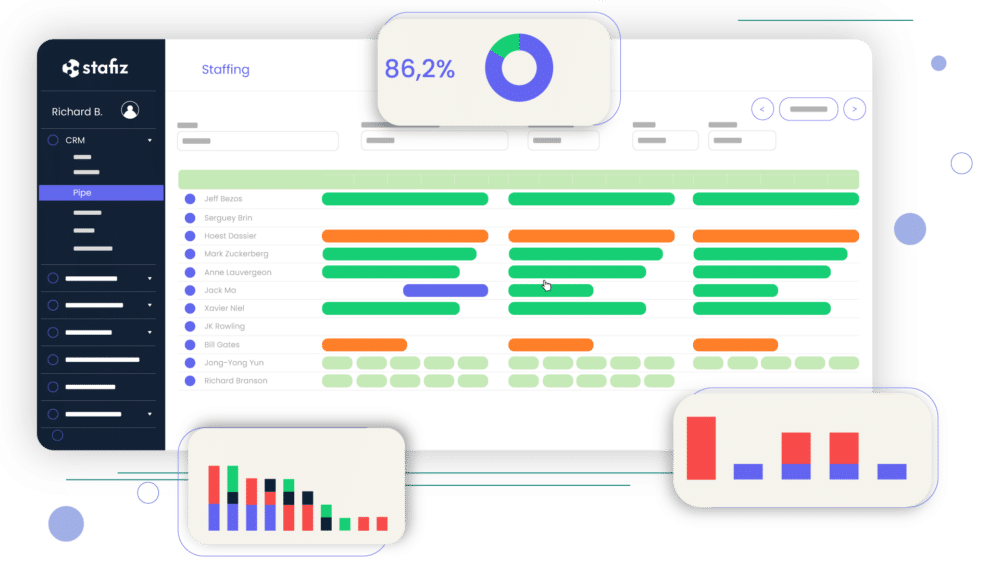
7. Not using the resource planning for the financial forecast
The resource planning is an essential element of the financial forecast. The mistake of decorrelating the cost forecast with the financial forecast is unfortunately all too common. On a regular basis, the projected cost on the projects is updated on the one hand, while at the same time the remaining costs of the project are entered manually to calculate the projected margin of the project.
The work is done twice! Unnecessary waste of time for the project manager. Because knowledge of the load forecast should make it possible to calculate the progress of the project, and more precisely the progress of turnover and margins in the coming months. Not using this data to calculate the percentage of cost progress is a mistake that is too often repeated.
💡 How to avoid it: Again, your resource planning must know how to calculate turnover and margins with the right methodology. Not all tools are able to correctly calculate the data to calculate the financial forecast. But when the tool allows it, visibility on the forecast is given in real time, and the responsiveness to optimize margins makes it possible to quickly increase the profitability of the activity.
8. Do not compare the realized with the resource planning for analysis purposes
The resource planning tools allows you to plan resources, optimize workloads and ensure the quality of projects by positioning the most relevant expertise on each project. But it is necessary to go further in the analysis. Without a comparison of the differences between what was achieved and what was resource planning, it is impossible to understand the reasons for a financial gap between what was planned and what was achieved. There is no point in doing a financial analysis at the end of the period without being able to make this comparison, to understand where the variance comes from, in number of days and in value.
💡 How to avoid it: the resource planning allows you to analyze over a given period (with a start date and an end date), the number of days worked in relation to the number of days planned. The analysis should be simple enough to identify gaps by person, project, and team.
9. Not making sufficient use of the resource planning to advance your company
Good management of the resource planning is a way to rapidly advance a company towards excellence. Not leveraging this process enough to optimize performance is damaging to the entire business. A good job by resource planning improves profitability, improves employee satisfaction and retention, improves project quality, improves customer satisfaction, and improves project margins. The ROI of good resource planning is therefore immense and the mistake of missing out on these improvements can cost the company dearly.
💡 How to avoid it: the implementation of a resource planning allows you to benefit from support from experts in the business who can explain how to set up the right processes and allow you to quickly improve the profitability of projects and employee satisfaction.
Stafiz helps you gain visibility and better manage your resource planning and your project progress with real-time data. The software takes into account costs and financial KPIs. Stafiz is a SaaS for managing the resource planning, project management and Business Intelligence. This way, budgets and margins are always respected and you make better decisions for your business.
To learn more about the Stafiz platform, request a demo.
